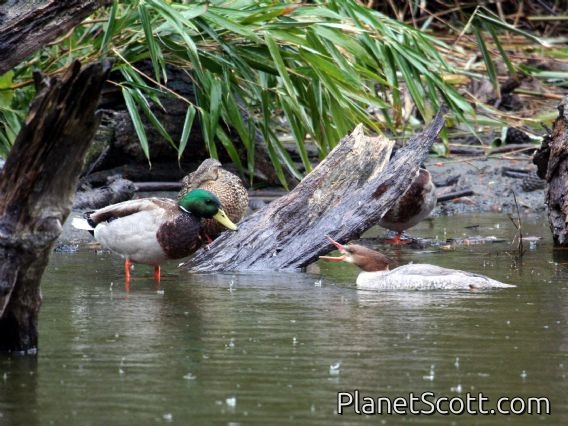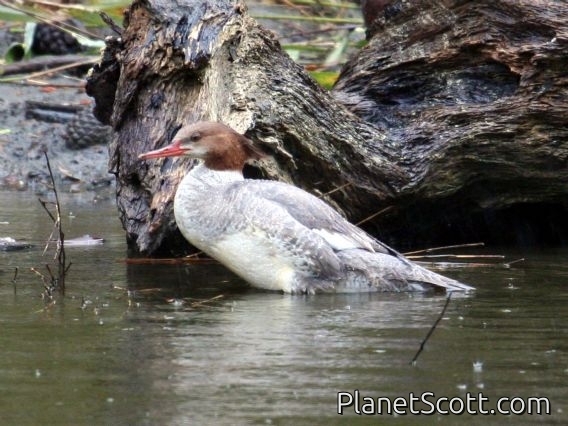Common Merganser (Mergus merganser)

Common Merganser (Mergus merganser) Female Scolds Mallard

Common Merganser (Mergus merganser) Female


×



Common Merganser (Mergus merganser) Female Scolds Mallard

Common Merganser (Mergus merganser) Female
About Common Merganser (Mergus merganser)
- Kingdom: Animals
- Phylum: Chordates
- Class: Birds
- Order: Anseriformes
- Family: Swans, Geese, and Ducks
The common merganser or goosander is a large sea duck of rivers and lakes in forested areas of Europe, Asia, and North America. The common merganser eats mainly fish. It nests in holes in trees. The name "common merganser" is used in North America, while "goosander" is used in Eurasia.
Source: Wikipedia
Visits
-
2007-03-26
Golden Gate Park - Lloyd Lake, United States of AmericaOne female from the rare bird alert. -
-
2009-08-15
Big River, United States of America -
2010-05-27
Kenai Peninsula, United States of America -
2012-05-20
Pyramid Lake, United States of America -
-
2013-02-16
Namieri National Park, India -
2013-03-04
John Heinz NWR at Tinicum (IBA), United States of America -
-
-
-
-
-
-
-
-
-
-
-
-
2024-05-25
Keuka Lake, United States of America -
-





